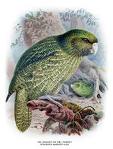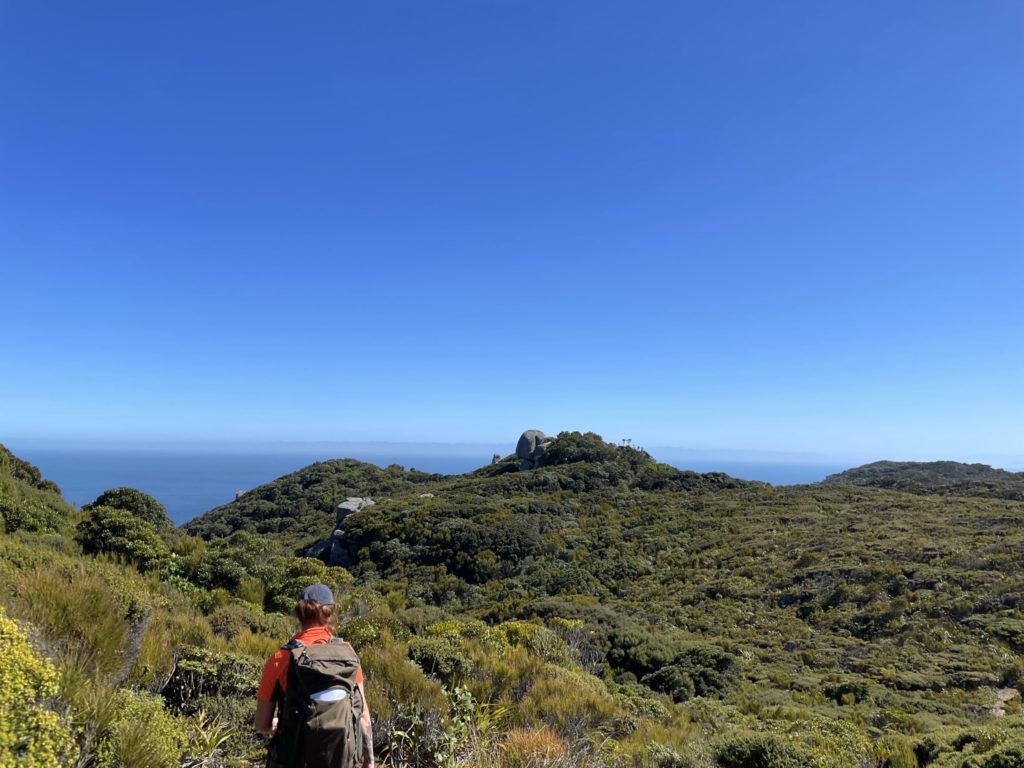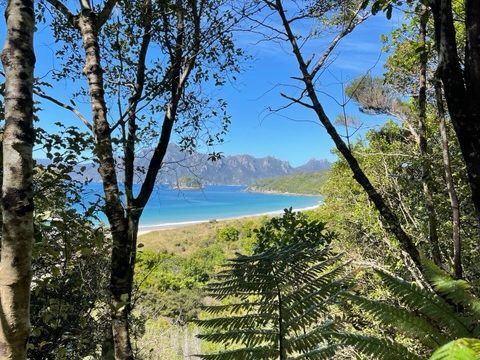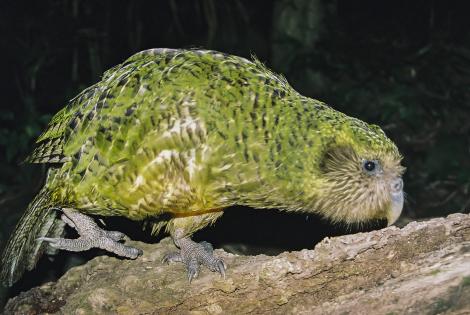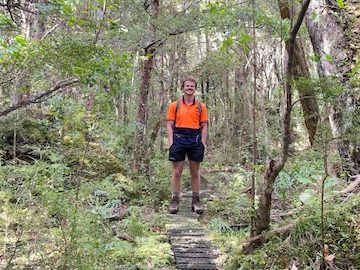But, if you’d asked Jack ten years ago where he’d be working today, he might’ve said marketing or economics. Instead, he’s feeding kākāpō in the pristine bush of Whenua Hou (Codfish Island) – a place he describes as ‘absolute paradise.’ For Predator Free Apprentice Jack, it’s a reminder of what he works so hard to preserve.
From balancing books to setting traps
After getting his degree in commerce, Jack quickly realised he wasn’t keen on a life indoors.
Jack started doing high country pest control work in 2020 and was soon offered one of the Predator Free Apprenticeships run by Predator Free New Zealand Trust (PFNZ). The two-year programme gives people experience and training in predator control. It’s growing the experts of the future that will help us meet the 2050 target.
Jack’s never had a second thought about his career change. He’s out in nature every day – bushbashing down creeks and slogging up hills.
It’s tough but rewarding work, and every now and then it takes him to some incredible places.
Getting up close with our taonga
Some weeks, hanging out with ‘the world’s weirdest birds’ is all part of the job.
Off the west coast of Rakiura (Stewart Island), Whenua Hou is a life raft for some of our most endangered species. It’s a step back in time – a snapshot of Aotearoa New Zealand as it once was.
When Jack’s boss asked him if he wanted to do a stint with the kākāpō recovery programme on one of our predator free offshore islands, he didn’t hesitate.
“Hell yeah,” he said. “I never thought I’d get to see a kākāpō in my life.”
Each year, the Department of Conservation (DOC) recruits eager volunteers and workers to help out in the busy summer breeding seasons. Their contributions keep the island running, and the rangers are grateful for their energy and passion. DOC ranger, Liz Friend, says Jack and fellow apprentice Reuben were amazing – they even made her two birthday cakes!
“We are always very humbled when people dedicate their very limited and precious free time to helping us with our mahi,” says Liz.
Jack spent his week looping round the island, dishing out food to hungry parrots and fastidiously cleaning their stations. In his free time, he read everything he could about kākāpō and Whenua Hou.
Born to be wild
When asked if there were any downsides to his trip, Jack paused, then gave a classic kiwi answer – “It was hard to hate.”
His highlight was meeting Merv, one of the first male kākāpō brought to the island back in the 80s.
While some birds are practically tame, coming right up to the huts, Merv has stayed wild. He’s his own bird.
One day, after he’d finished cleaning and replacing Merv’s feed, Jack crouched behind a tree and waited.
When the old bird waddled out, Jack was mesmerised.
“I just sat there for 20 minutes watching him – it was pretty special.”
Kākāpō once lived throughout Aotearoa New Zealand. When European arrival introduced stoats, possums, cats and rats, numbers plummeted. These nocturnal, flightless birds were incredibly vulnerable – as were their nests.
Now, they live on just three predator-free offshore islands. Their numbers are growing but this is presenting its own challenges. One of the biggest hurdles for the breeding programme is finding enough predator-free habitat for this growing population.
Birds like Merv are what predator control is all about. If the Predator Free 2050 goal is achieved, it’s hoped these quirky parrots will be allowed to scamper through bush on the mainland once again.
Bringing back the bush
Jack’s big passion is restoring native bush. He describes the forests on Whenua Hou as “amazingly lush, dominated by rimu and southern rātā”.
A healthy forest is so important – when the rimu seed, the kākāpō breed.
Jack says coming back to the mainland was hard at first – being on the island was like seeing in colour for the first time.
“When you spend time in pristine bush like that you really notice what’s missing when you come back,” he says.
But, it’s not all doom and gloom. For our predator control teams, these experiences are incredibly motivating. Seeing what a thriving ecosystem looks like has put wind in Jack’s sails and he’s more determined than ever to help turn things around.
